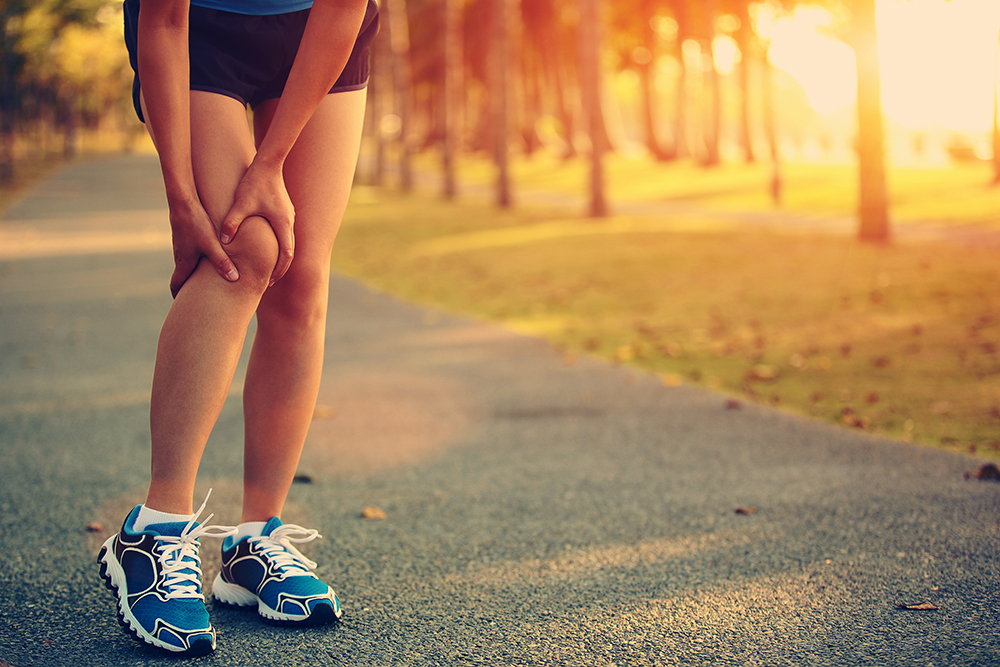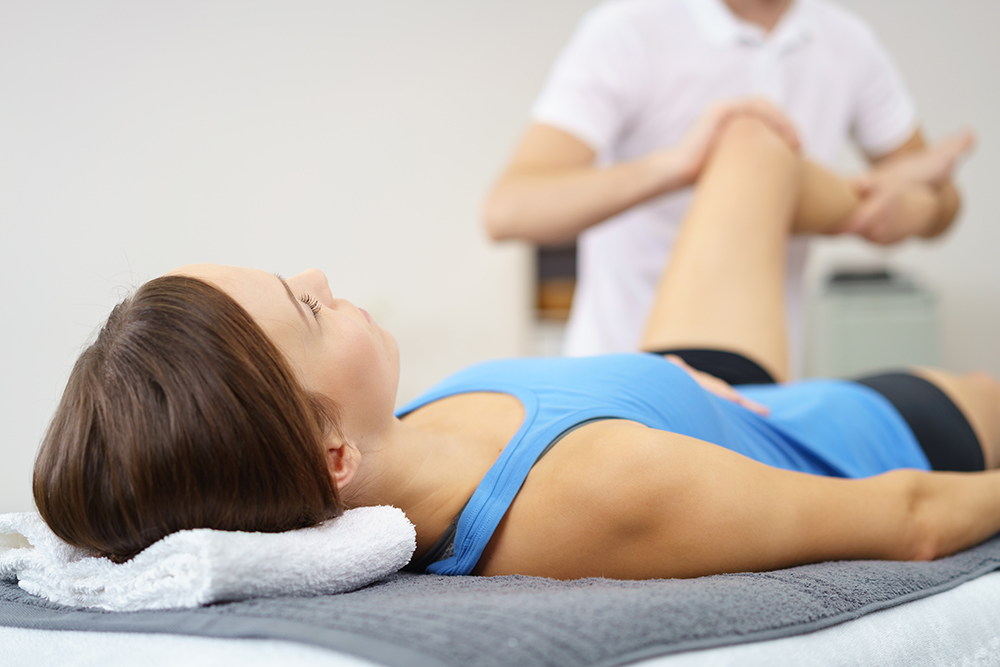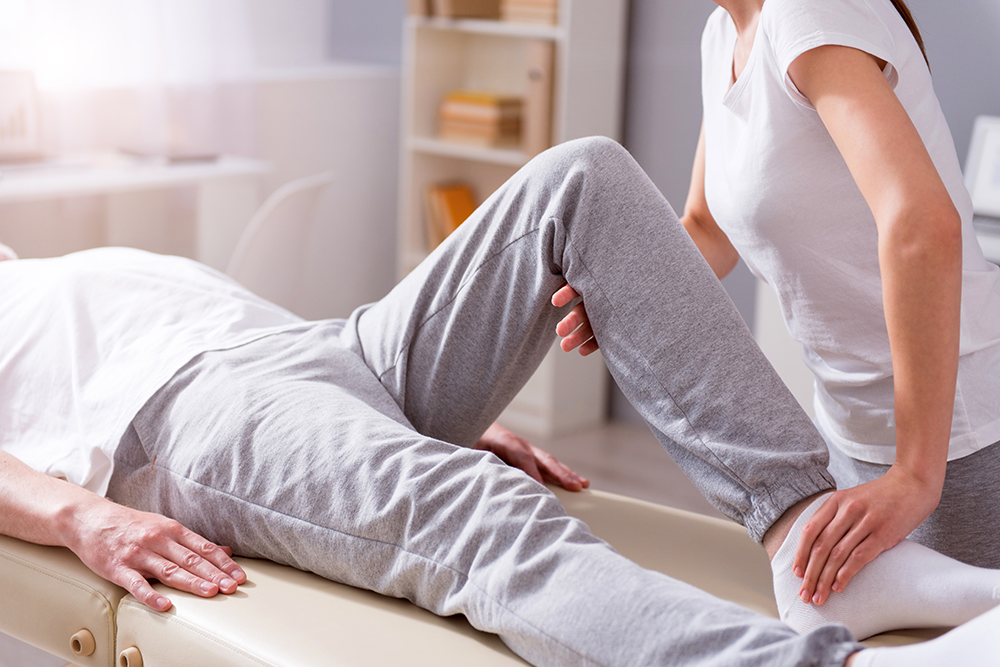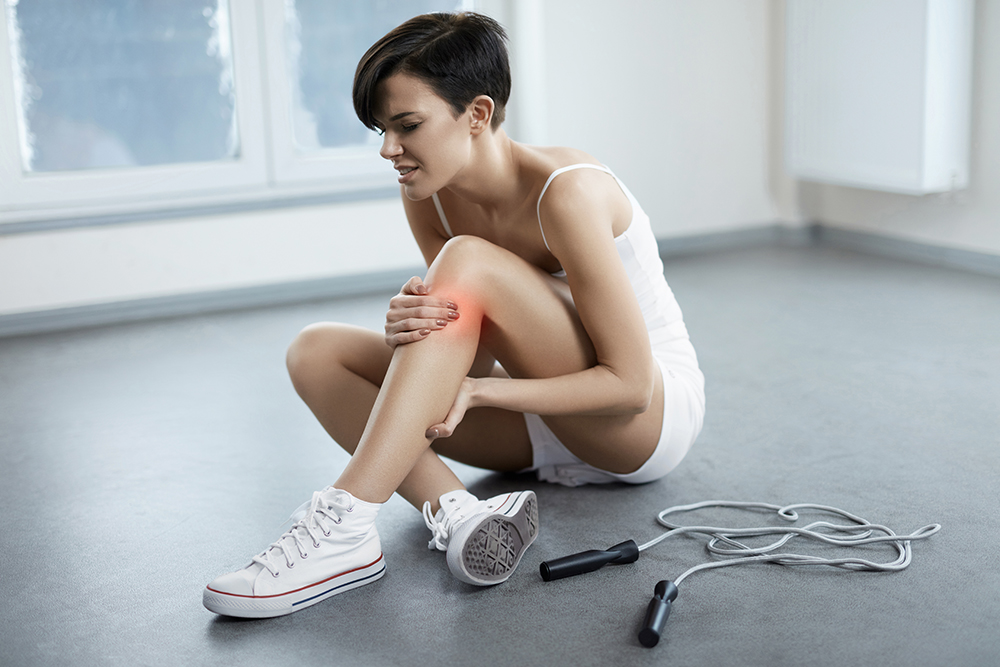Knee Ligament tears
Knee injuries are common, especially when you’ve been taking part in sport. Injuries to soft tissues, such as ligaments, cartilage and tendons are the most likely. In some cases, you may need surgery to correct your knee injury. But the good news is that many knee injuries get better with rest and simple treatments you can carry out at home.
There are many different structures inside and outside your knee joint. These include:
• ligaments, which connect your bones together
• articular cartilage, which covers the ends of your shin bone and
thigh bone, as well as the back of your kneecap (patella)
• two crescent-shaped cartilage discs called menisci, which act as
‘shock absorbers’ and help to stabilise your knee
• tendons, which connect your muscles to your bone
Injury to your knee can damage any one or more of these structures.
Your knee ligaments help to keep your knee stable by holding the bones together. You have two sets of ligaments in your knee. The collateral ligaments run down either side of your knee, while the cruciate ligaments lie inside your knee. Each can get damaged.
• Collateral ligament injuries – the medial collateral (MCL) is on the inner side of your knee and the lateral collateral ligament (LCL) is on the outer side. They limit the amount your knee can move from side to side. You can sprain or tear your MCL if your lower leg gets forced outwards; for example, if you’re tackled in rugby or when you’re skiing. Your LCL is less commonly injured but may be damaged if your lower leg gets forced inwards. Both ligaments may also be damaged if your knee twists too far outwards.
• Cruciate ligament injuries – cruciate means cross-shaped. Your anterior cruciate ligament (ACL) and posterior cruciate ligament (PCL) form a cross inside your knee. They help to keep your knee stable by controlling its movement backwards and forwards. ACL injuries are one of the most serious types of knee injury. They often happen when you twist your knee, for instance when you land on your leg then quickly turn. You might get this type of injury while playing football or basketball. Your PCL may get damaged if you fall on your knee while it’s bent. Another typical way of damaging your PCL is when your knees hit the dashboard during a car accident.
If you’ve injured one or more of your knee ligaments, a doctor will investigate and may grade your injury according to how severe the damage is.
• Grade 1 is a stretch of the ligament
without tearing.
• Grade 2 is a partial tear of the
ligament.
• Grade 3 is a complete tear through the
ligament.
The knee ligaments that you’re most likely to damage are your MCL and your ACL.
There are other soft tissues around your knee that can be injured (soft tissue means any tissue in your body that isn’t bone). These include cartilage and tendons.
• Cartilage injuries – tearing a meniscus (one of the wedge-shaped pieces of cartilage lying inside your knee) is one of the most common knee injuries. It’s what people usually mean when they say they have a ‘torn cartilage’ in their knee. You can damage a meniscus if you play a sport that involves twisting, such as football or basketball, but it can also happen to runners, tennis players and skiers. As you get older, your menisci may become worn. This makes them more likely to tear during your normal daily activities. Your knee also has cartilage covering the parts of your bones which lie inside the joint. This articular cartilage can become damaged too, often at the same time as damage happens to the other soft tissues.
• Tendon injuries – if you’re a regular runner or take part in sports where you jump a lot, you may damage the tendons that attach muscles to your knee. You can irritate or tear the tendon that connects your kneecap (patella) to your thigh muscle. This tendon is called the quadriceps tendon. Or you may irritate soft tissue around your kneecap, including the patellar tendon, which is just below your kneecap (jumper’s knee).
Symptoms of Ligament Tears
The symptoms for most ligament injuries are similar. These include pain, swelling and instability – you may feel like your knee is giving way. You may feel or hear a popping or snapping when the injury happens. You may also find that you can’t put your full weight on the injured leg.
If you injure a meniscus in your knee, you may feel severe pain and it may swell after a few hours. In addition, your knee may ‘lock’ so that you can’t move it in the usual way. You’ll probably still be able to walk a little on your injured leg. If you’ve torn your tendons, as well as pain and swelling you may find that your kneecap is lying higher or lower than it should. You won’t be able to straighten your knee. If you’ve injured your knee and the pain is mild or moderate or has come on gradually, visit your GP. Seek advice if it’s very painful or swollen, giving way, clicking painfully, locking or you can’t put your full weight on it. If you’ve hurt your knee in an accident, are in severe pain, or the knee is severely swollen, go to your nearest A&E department.
Treatment of Ligament Tears
There are different types of treatment that a healthcare professional may suggest, depending on the type and severity of the damage to your knee. It’s frustrating, but it’s important to be patient when recovering from a knee injury – your injury may take time to fully repair itself. You may not be able to do all the things you’re used to doing for some time. Even after your knee injury has recovered, there’s still a risk that you may get arthritis in that knee in the future. This is called post-traumatic or degenerative arthritis. It usually occurs around five to 10 years after the initial injury. After a more severe injury, it can come on more quickly. Different injuries require different rehabilitation, so it’s best to talk to your GP.
There’s a lot you can do to help yourself if you have a knee injury. You should follow the PRICE procedure for any soft tissue injury to your knee. PRICE stands for the following.
• Protect your knee from further harm.
• Rest your knee for the first two to three days, possibly by
using crutches. Then reintroduce movement so that your knee doesn’t
become stiff and you don’t lose muscle strength.
• Ice the painful area with a cold compress, for example ice
or a bag of frozen peas wrapped in a towel. Do this for 20 minutes
every two hours during the day for the first two to three days.
Don’t apply ice directly to your skin as it can damage
it.
• Compress the joint with a simple elastic bandage or
elasticated tubular bandage to support the knee and help decrease
swelling. Don’t leave the bandage on while you sleep.
• Elevate your knee by resting it above the level of your
heart, keeping it supported.
There are certain things you shouldn’t do in the first three days after your injury so you don’t damage your knee further. You can remember these as HARM.
• Heat – don’t take hot baths, showers or saunas, or use a
heat pack.
• Alcohol – don’t drink alcohol because it can increase
bleeding and swelling in the affected area.
• Running or other forms of exercise – these may cause
further damage.
• Massaging the injured knee – this can cause more swelling
or bleeding.
Paracetamol, which you can buy over the counter, is the best medicine to use if you have a knee injury. Over-the-counter non-steroidal anti-inflammatory drugs (NSAIDs) such as ibuprofen can help to reduce inflammation and swelling, as well as relieve pain. However, you shouldn’t take oral NSAIDs (tablets) for the first two days after your injury because they may delay healing. NSAIDs are also available as gels, creams and sprays that you can put directly onto your skin and these are OK from the time of injury.
Your GP may prescribe stronger painkillers if your pain is severe. Always read the patient information that comes with your medicine and if you have questions, ask your pharmacist or doctor for advice.
If your injury is more severe or complex or persists for over six to eight weeks, your GP may refer you to a physiotherapist. This is a health professional who specialises in movement and mobility. You can also choose to see a physiotherapist privately. They will develop a programme of rehabilitation exercises to gradually strengthen your knee and restore its normal function. These exercises will vary depending on the type of injury you have and how severe it is.
Some people have braces or strapping to support the knee during rehabilitation, usually when an injury has been severe.
For some types of knee injury, your GP or physiotherapist could refer you to an orthopaedic surgeon for assessment. They may recommend that you have surgery to repair the damage to your knee – especially if other forms of treatment haven’t worked.
Your surgeon is more likely to suggest surgery if you have one of the following injuries.
• You have torn your anterior cruciate ligament (ACL) and you do a lot of sport or have also torn a meniscus. ACL reconstruction involves taking a piece of tendon (usually from your patella tendon or hamstring) to replace the damaged ligament.
• Your knee remains painful or locks after an injury to your meniscus. Your surgeon may repair or partially remove your damaged meniscus.
• You have an injury to your medial collateral ligament (MCL) that hasn’t healed after three months of non-surgical treatment. Your surgeon will repair or reconstruct your MCL.
You may be able to have a type of keyhole surgery called knee arthroscopy to get to the damaged area of your knee.
For more information on knee ligament tears and the various treatment options please do not hesitate to get in touch with Mr Atwal through our appointments page.




QUICK ENQUIRY


